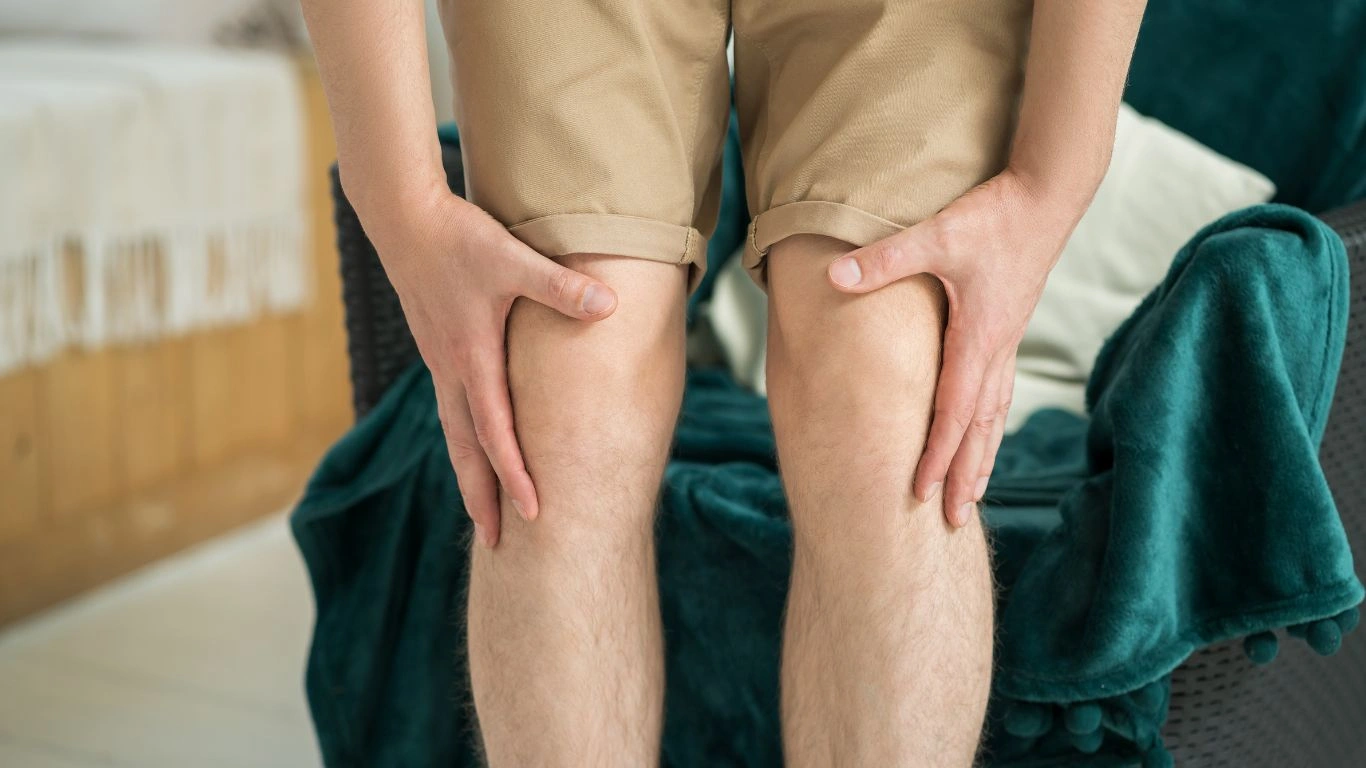“Manage Rheumatoid Arthritis and Bone Health Effectively for Stronger Bones”
Rheumatoid arthritis (RA) is a chronic condition that can have a profound impact on many aspects of life. As a Rheumatoid Arthritis expert, I’ve seen firsthand how the condition affects not just the joints, but also bone health. In fact, managing bone health in individuals with RA is often one of the most overlooked aspects of treatment. People living with RA are at an increased risk of bone loss and fractures due to both the disease itself and the medications used to manage it. That’s why it’s essential to approach RA treatment with a holistic view that addresses bone health alongside the management of inflammation and pain.
Understanding the Link Between Rheumatoid Arthritis and Bone Health

Rheumatoid arthritis is an autoimmune disease that causes inflammation in the joints, leading to pain, stiffness, and swelling. While it’s most commonly associated with the joints, it can also have a significant impact on bone density and overall bone health. This is a crucial aspect that often gets sidelined when focusing on treating the more obvious symptoms of RA, such as joint pain and fatigue. If you’re living with RA, it’s important to understand how the disease affects your bones and what you can do to protect them.
The Impact of RA on Bone Health
The inflammation caused by rheumatoid arthritis doesn’t just damage the cartilage in your joints—it can also interfere with the normal functioning of your bones. Over time, chronic inflammation can lead to an imbalance in bone metabolism, increasing the risk of bone loss (osteoporosis) and fractures. Research has shown that individuals with RA are more likely to experience reduced bone mineral density (BMD), particularly in the spine, hips, and wrists. This puts people with RA at a higher risk of osteoporosis, which can lead to fractures even with relatively minor falls or injuries.
Why Does RA Increase the Risk of Bone Loss?
There are several reasons why individuals with RA may be at higher risk for bone loss. For one, the inflammatory cytokines (proteins that help regulate immune responses) produced by the body in response to RA can stimulate osteoclasts—cells that break down bone tissue. These osteoclasts can become overly active in the presence of chronic inflammation, leading to an increase in bone resorption (bone breakdown).
In addition to the inflammatory effects, certain medications used to treat RA can also contribute to bone loss. For example, corticosteroids (steroids), commonly prescribed to reduce inflammation in RA, have been linked to a reduction in bone density. While these medications are effective at controlling symptoms, they can have long-term effects on bone health if not carefully managed.
Symptoms of Bone Loss in RA
Since bone loss often doesn’t show obvious symptoms until a fracture occurs, it’s crucial to stay proactive in managing your bone health if you have RA. However, some subtle signs may indicate that your bones are becoming weaker, including:
- Increased joint pain or tenderness—particularly in areas like the wrists or hips.
- Loss of height—a gradual shrinking in stature due to spinal compression fractures.
- Fractures from minor falls—if you notice that you’re breaking bones more easily, it could be a sign of underlying bone thinning.
How to Protect Your Bones While Managing RA
As someone who has spent years working with patients living with RA, I can tell you that managing bone health is just as important as managing the inflammation in your joints. Fortunately, there are a variety of strategies that can help reduce the risk of bone loss and fractures while still keeping RA symptoms under control.
Bone Health Management Tips for People with RA

1. Diet and Nutrition
A well-balanced diet plays a vital role in maintaining bone health, and there are certain nutrients that are particularly important for people with RA. Calcium and vitamin D are essential for bone strength, and making sure you get enough of these can help reduce your risk of osteoporosis. While calcium-rich foods like dairy, leafy greens, and fortified foods are great, vitamin D helps your body absorb calcium, so it’s equally important to ensure you get enough of it. Sun exposure is a natural source of vitamin D, but if you live in an area with limited sunlight, you may want to consider a supplement.
2. Regular Exercise
Exercise isn’t just for managing your weight or improving your cardiovascular health—it’s also key for maintaining bone density. Weight-bearing exercises, like walking, hiking, and strength training, are particularly beneficial for bone health. These activities stimulate bone formation and help to keep bones strong. But if you have RA, it’s crucial to tailor your exercise routine to your capabilities. Overexerting yourself can cause joint pain and inflammation, so it’s essential to strike a balance between strengthening bones and managing your RA symptoms. Always consult with your healthcare provider before starting a new exercise program.
3. Medication and Supplements
Managing your RA with medication can help reduce inflammation and prevent further joint damage, but it’s also important to consider how these medications impact bone health. If you’re on corticosteroids or other medications that can weaken bones, talk to your doctor about options to protect your bones. Medications like bisphosphonates or denosumab may be prescribed to help maintain bone density. In some cases, calcium and vitamin D supplements are recommended to ensure that you’re getting enough of these nutrients to support your bones.
4. Lifestyle Changes
There are several lifestyle factors that can impact bone health. Smoking, for example, can reduce bone density, so quitting smoking is one of the best things you can do for your overall health, including your bone health. Excessive alcohol consumption is also a risk factor for osteoporosis, so it’s wise to limit alcohol intake. Maintaining a healthy weight is another important factor, as being overweight can increase stress on your joints, while being underweight can contribute to bone loss.
5. Regular Bone Health Monitoring
Since bone loss can occur gradually and without noticeable symptoms, it’s essential to monitor your bone health regularly, especially if you have RA. This might include getting regular bone density tests (DEXA scans) to assess bone mineral density and check for early signs of osteoporosis. Monitoring these levels can help you and your doctor make adjustments to your treatment plan as needed to prevent further bone loss.
Managing Inflammation for Better Bone Health in RA

One of the core challenges of rheumatoid arthritis (RA) is the persistent inflammation it causes throughout the body. The inflammation that damages the joints also affects bone health, and controlling this inflammation is essential for preventing bone loss. Now, this doesn’t mean you need to eliminate all inflammation—after all, a degree of inflammation is part of the body’s natural healing process. But in the case of RA, it becomes chronic, which can wreak havoc on your bones if left unchecked.
How Inflammation Affects Bone Remodeling
Bone remodeling is a continuous process where old bone is replaced by new bone tissue. In a healthy individual, this process is balanced, with osteoclasts breaking down bone tissue and osteoblasts building new bone. However, in individuals with RA, the body’s immune system goes haywire, producing inflammatory cytokines that not only attack the joints but also trigger the osteoclasts to become overactive. As a result, bone resorption (breakdown) outpaces bone formation, leading to decreased bone density and an increased risk of fractures.
So, the key here is managing inflammation. Fortunately, modern treatments can target inflammation directly, helping to protect bones while also easing joint pain. Nonsteroidal anti-inflammatory drugs (NSAIDs) are often used to relieve pain and reduce inflammation, but there are also disease-modifying antirheumatic drugs (DMARDs) and biologics that are more effective in the long term for managing RA and its impact on bone health.
The Role of Biologic Therapies
In recent years, biologic therapies have become a game-changer for RA patients. These medications target specific parts of the immune system that drive inflammation. Tumor necrosis factor (TNF) inhibitors, interleukin inhibitors, and other biologic treatments help to dampen the inflammatory response in RA, which in turn, reduces bone loss. From my experience, patients who have switched to biologics tend to see not only a reduction in joint pain but also improved bone density over time.
If you’ve been living with RA for years and haven’t yet explored biologics, it’s worth discussing with your healthcare provider. For some people, biologic therapies can drastically reduce the need for steroids, which, as mentioned earlier, can contribute to bone loss.
Hormonal Factors and Bone Health in RA

Did you know that hormonal changes play a significant role in bone health, especially when you’re living with rheumatoid arthritis? It’s something that doesn’t get discussed enough, but hormones—particularly estrogen and testosterone—have a direct impact on bone density. Estrogen is especially important for women, as it helps protect bone mass. When women go through menopause, estrogen levels drop significantly, which can speed up bone loss.
In patients with RA, the situation can be more complicated. Many women with RA tend to go through menopause earlier than their peers, and this can further increase their risk of osteoporosis. Add to that the fact that certain medications used to treat RA, such as methotrexate, may influence hormonal levels, and you’ve got a complex situation that requires close monitoring.
Managing Hormonal Effects on Bone Health
If you’re a woman with RA going through menopause, it’s especially crucial to monitor your bone health. In some cases, hormone replacement therapy (HRT) might be recommended, but it comes with its own set of risks and benefits that you’ll need to discuss with your doctor. There are also other ways to manage hormonal changes, like focusing on nutrition and ensuring that you’re getting enough calcium and vitamin D to support your bones during this time of transition.
For men, low testosterone can also contribute to decreased bone density, so it’s essential to address any hormonal imbalances with the help of your healthcare team. And don’t forget about your bones even if you’re not experiencing menopause yet—keeping an eye on your hormonal health early on can prevent major issues down the road.
Supplements and Their Role in Bone Health

As someone who works with RA patients, I can’t stress enough how important supplements can be in maintaining bone health. While a balanced diet is essential, sometimes it’s just not enough to get all the nutrients you need to keep your bones strong. If you have RA, you’re likely already on medications to manage inflammation, and it’s worth considering the addition of specific supplements to ensure that your bones remain as healthy as possible.
Key Supplements for Bone Health in RA
- Calcium: Calcium is the building block of bone. If you’re not getting enough calcium in your diet, it’s time to consider a supplement. Aim for around 1,000 mg a day if you’re under 50, and 1,200 mg if you’re older than that. If you have RA, it’s especially important to stay on top of your calcium intake.
- Vitamin D: Vitamin D plays a critical role in calcium absorption, so it’s vital for bone health. Aim for 600 IU per day, but some people with RA may need higher doses, especially if you’re not getting enough sun exposure. Talk to your doctor about checking your vitamin D levels to ensure you’re meeting your needs.
- Magnesium: Magnesium works closely with calcium and vitamin D to support bone health. It helps regulate calcium levels and plays a role in bone mineralization. Many people don’t get enough magnesium, so a supplement could help if you’re at risk for bone loss.
- Omega-3 Fatty Acids: While omega-3s aren’t directly linked to bone density, they help reduce inflammation in the body. Since chronic inflammation is a major contributor to bone loss in RA, omega-3s can help reduce the inflammatory process, offering indirect protection for your bones.
Should You Take Supplements?
Before starting any new supplements, it’s essential to speak with your doctor. In some cases, supplements can interfere with medications or other health conditions. Your doctor can help you figure out the right dosage and ensure that you’re getting the most benefit from your supplements without any unintended side effects.
Preventing Bone Fractures in RA Patients

One of the biggest concerns when managing rheumatoid arthritis (RA) and bone health is the risk of fractures. As we’ve discussed earlier, the combination of chronic inflammation and certain medications, like corticosteroids, can significantly weaken bones, making fractures more likely. But don’t worry—there’s a lot you can do to reduce the risk of fractures while managing your RA symptoms effectively. And trust me, after working with so many RA patients over the years, I’ve seen firsthand how some small changes in your lifestyle and treatment plan can make a huge difference in your bone health.
Building a Safe Environment at Home
One of the simplest yet most effective ways to reduce your risk of fractures is by making your living space safer. People with RA often experience joint pain, stiffness, and fatigue, which can make them more prone to falls. To prevent accidents, I recommend doing a quick audit of your home to remove potential tripping hazards.
- Clear clutter: Make sure walkways are clear and free from obstacles like rugs, cords, or furniture that could trip you up.
- Install grab bars: In places like the bathroom or stairs, installing grab bars can provide extra stability and support when standing or moving around.
- Good lighting: Ensure that all areas of your home, especially hallways, stairs, and bathrooms, are well-lit. This helps you see where you’re going and reduces the risk of missteps.
Use of Assistive Devices
If your RA affects your mobility, using assistive devices can help keep you steady on your feet. Walking aids like canes or walkers may seem like a hassle at first, but they’re incredibly effective at reducing the risk of falls. And I’ve seen patients who felt embarrassed about using them, but once they realized how much safer they felt, they quickly became regular users.
Not to mention, modern assistive devices are designed to be lightweight and unobtrusive, so they don’t interfere too much with your lifestyle. If you’re unsure about which device might work best for you, speak to your healthcare provider or physical therapist. They can provide guidance on the right tools for your needs and how to use them safely.
Physical Therapy for Joint and Bone Protection

Incorporating physical therapy into your RA management plan can do wonders for both your joint and bone health. I’ve personally seen patients who’ve embraced physical therapy and found it incredibly beneficial for preventing bone fractures, improving mobility, and decreasing pain. A trained physical therapist can help you develop a program specifically designed for your needs, which includes exercises that protect both your joints and your bones.
Benefits of Physical Therapy for RA Patients
- Improved joint function: Targeted exercises can help maintain or even increase the range of motion in your joints, reducing stiffness and improving mobility.
- Strengthened muscles: Strong muscles support the joints, which reduces pressure on the bones. Strengthening the muscles surrounding vulnerable joints can provide added stability and protection against falls.
- Better balance: Many physical therapy programs focus on improving balance and coordination, which can significantly reduce the risk of falls.
- Pain management: Physical therapists can teach you techniques to manage pain through exercises that reduce inflammation and promote healing in affected areas.
Remember, it’s important to start any physical therapy program slowly and under the supervision of a professional, especially if you’re new to exercise. They can help ensure that you’re doing the right exercises in a way that doesn’t put undue stress on your joints or bones.
Monitoring Bone Health Over Time
When you’re living with RA, monitoring your bone health regularly is key. Bone loss can be a gradual process, and sometimes it doesn’t become apparent until you experience a fracture or other complications. However, early detection is crucial to preventing further bone damage. I always recommend that my patients with RA undergo regular bone density screenings (DEXA scans) to track any changes in bone mass.
When to Get a Bone Density Test
Generally, people with RA should start having bone density tests earlier than the general population, especially if they are on long-term corticosteroid therapy or have other risk factors for osteoporosis. I recommend discussing with your doctor when it would be appropriate for you to start testing, but most patients should begin getting scans around the age of 50, or earlier if they have risk factors like prolonged steroid use or advanced RA.
Bone density tests are painless, quick, and non-invasive. The results can give you and your healthcare team important insights into your bone health and allow you to take proactive steps to prevent fractures and bone-related complications.
References
Here are some great resources that can help you dive deeper into the connection between rheumatoid arthritis and bone health management:
- Health Usias – Understanding Rheumatoid Arthritis and Bone Health
- American College of Rheumatology – RA and Bone Health
- NIAMS – Bone Health and Rheumatoid Arthritis
Disclaimer
The information provided in this article is intended for general informational purposes only and should not be construed as medical advice. Always consult with your healthcare provider before making any changes to your treatment plan, diet, or lifestyle. The content is based on professional knowledge, but individual cases may vary, and treatment decisions should be personalized to meet your specific needs.

Tarra Nugroho is a dedicated Nurse Practitioner with a strong foundation in family and preventive care. She brings both compassion and clinical expertise to her practice, focusing on patient-centered care and health education. As a contributor to Healthusias.com, Tarra translates medical knowledge into clear, empowering articles on topics like women’s health, chronic disease management, and lifestyle medicine. Her mission is simple: help people feel seen, heard, and informed—both in the clinic and through the content she creates. When she’s not caring for patients, Tarra enjoys weekend hikes, plant-based cooking, and curling up with a good health podcast.






